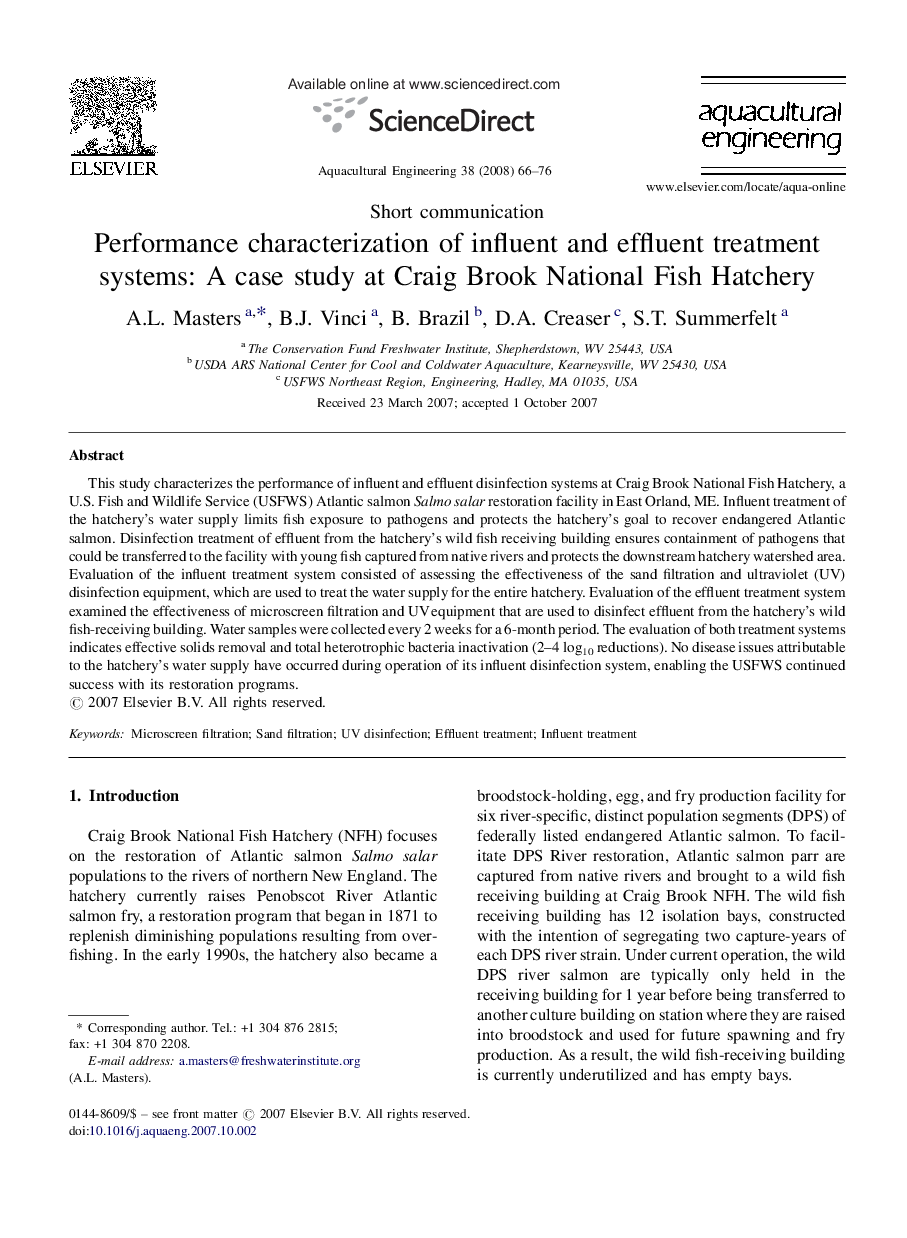| Article ID | Journal | Published Year | Pages | File Type |
|---|---|---|---|---|
| 6381627 | Aquacultural Engineering | 2008 | 11 Pages |
Abstract
This study characterizes the performance of influent and effluent disinfection systems at Craig Brook National Fish Hatchery, a U.S. Fish and Wildlife Service (USFWS) Atlantic salmon Salmo salar restoration facility in East Orland, ME. Influent treatment of the hatchery's water supply limits fish exposure to pathogens and protects the hatchery's goal to recover endangered Atlantic salmon. Disinfection treatment of effluent from the hatchery's wild fish receiving building ensures containment of pathogens that could be transferred to the facility with young fish captured from native rivers and protects the downstream hatchery watershed area. Evaluation of the influent treatment system consisted of assessing the effectiveness of the sand filtration and ultraviolet (UV) disinfection equipment, which are used to treat the water supply for the entire hatchery. Evaluation of the effluent treatment system examined the effectiveness of microscreen filtration and UV equipment that are used to disinfect effluent from the hatchery's wild fish-receiving building. Water samples were collected every 2 weeks for a 6-month period. The evaluation of both treatment systems indicates effective solids removal and total heterotrophic bacteria inactivation (2-4Â log10 reductions). No disease issues attributable to the hatchery's water supply have occurred during operation of its influent disinfection system, enabling the USFWS continued success with its restoration programs.
Related Topics
Life Sciences
Agricultural and Biological Sciences
Aquatic Science
Authors
A.L. Masters, B.J. Vinci, B. Brazil, D.A. Creaser, S.T. Summerfelt,
